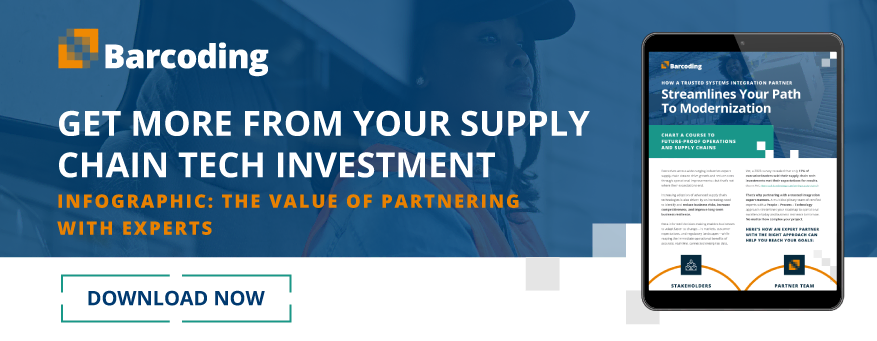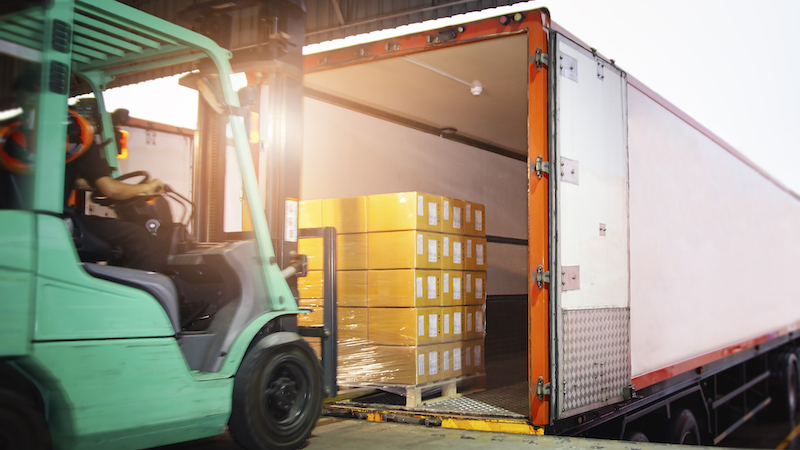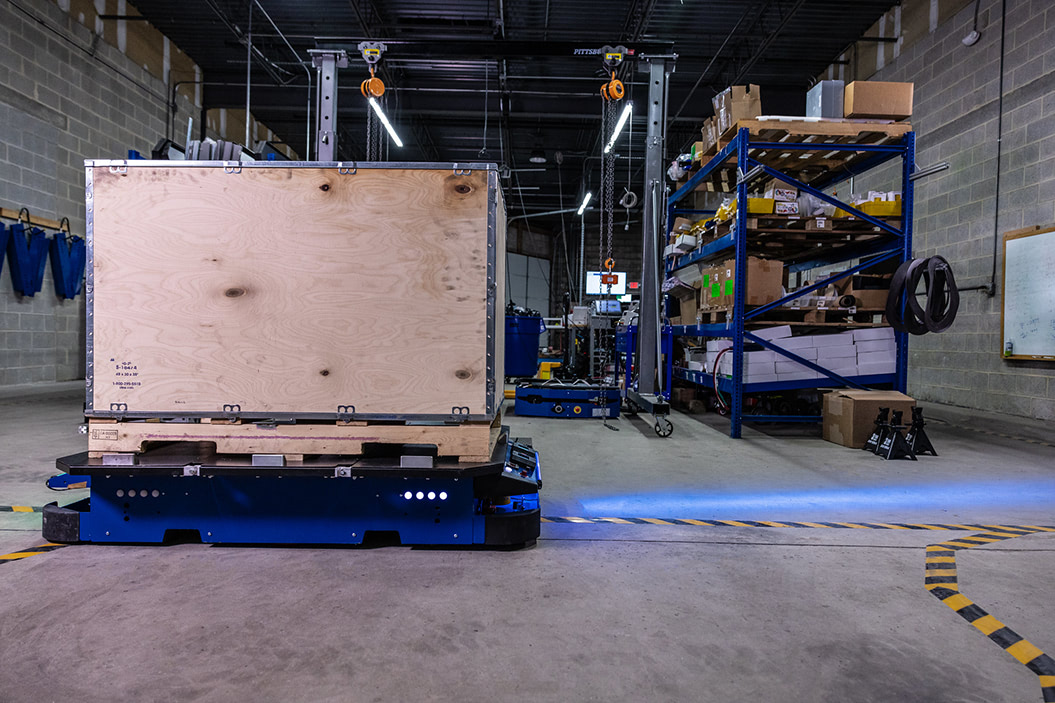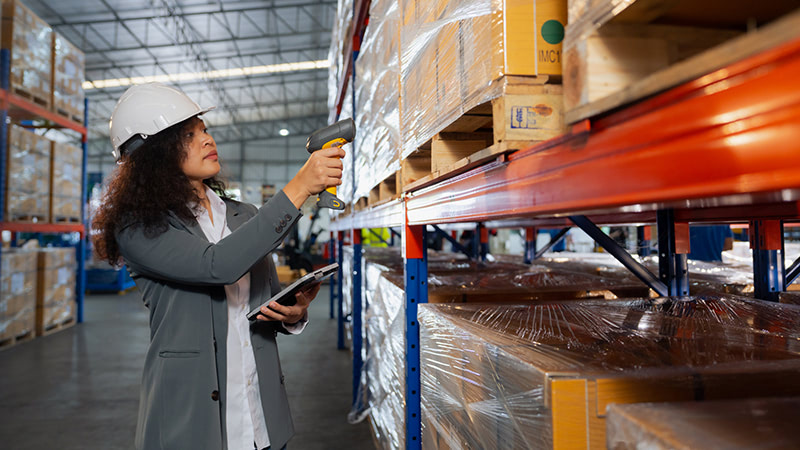From the smallest direct-to-consumer ecommerce companies to major consumer goods manufacturers, businesses of all sizes and industries rely on third-party logistics (3PL) services to handle shipping and supply chain management on their behalf.
Companies look to their 3PL partners to provide supply chain expertise and benefit from efficiencies of scale. This is especially true for small to medium-sized businesses that often lack the experience and budget to manage complex, global supply chains and logistics.
As consumer expectations have risen for timely, accurate, flexible order fulfillment and delivery, pressure has also risen for 3PLs to maximize efficiency and accuracy within their operations. Rising fuel costs, increasing consumer demand, ongoing labor shortages and capacity constraints, and sustainability concerns add to the pressure.
Today, that means 3PLs complement their experience in transportation and logistics with advanced data capture, data management, and automation technologies.
Within operations, 3PLs are implementing data capture, data management, and automation to achieve across-the-board improvements—from a better day-to-day work experience for warehouse employees to better-informed administrative and business decisions. In this article, we’ll take a closer look at some of the top technologies 3PLs are implementing to stay ahead of the curve.
How Advanced Data Capture Improves Performance for Third-Party Logistics Providers
Customers look to 3PLs for capabilities and cost savings they can’t achieve on their own. Smooth, efficient operations can help both the 3PL and its customers reduce costs, increase productivity, and improve customer satisfaction by delivering goods on time and in good condition.
Getting there starts with optimizing data capture and improving data management to prevent errors, reduce waste, improve inventory management, attract and retain quality workers, and inform key decisions with real data.
By optimizing efficiency and accuracy, third-party logistics providers can enhance their competitiveness, build stronger relationships with customers, and drive business growth. In fast-paced and demanding consumer-driven industries, these factors are essential for success.
The introduction of barcodes and mobile scanners revolutionized warehousing and logistics; today, they serve as foundational technologies on which 3PLs are building their future, and they’re accompanied by a host of tech advancements that are changing the way products get to customers.
1. Barcode Labels & Printers
Barcodes are used extensively by 3PLs. They play a vital role in identifying, tracking, and managing inventory throughout warehouses—and the tracking of shipments all the way to the consumer’s doorstep.
Barcodes are used to identify and unitize products and to accurately label specific storage locations, so every item and space in a warehouse can be accurately accounted for. A properly organized and labeled warehouse, along with properly labeled products, enables a warehouse management system (WMS) to process and handle detailed information about inventory and product movement.
During the shipping process, barcode labels applied to shipments enable individual packages to be tracked from the moment they leave the warehouse to their destination. That means 3PLs can have detailed, up-to-date information on the status of every shipment, along with data on performance to inform their best practices and continuous improvement efforts.
2. Warehouse Mobility
Mobility technologies like handheld scanners, wearables, and voice-assisted picking technologies improve 3PL operations in numerous ways. Compact, lightweight, rugged mobile computers are perfect for warehouse environments and today, businesses have access to virtually any configuration needed to make picking, packing, and shipping easier for employees.
Along with better decision-making, these are a few benefits 3PLs gain by implementing mobile computing:
- Flexibility—employees on the warehouse floor or out in a yard can be connected and capturing data in virtually any environment, with hands free if needed
- Real-time accuracy—when workers’ barcode scans are immediately captured and recorded via connected systems, inventory is automatically updated, reducing human error
- Cost savings—mobile workers can pick more accurately and efficiently, enabling 3PLs to achieve more productivity in less time, with fewer workers
3. Warehouse Management Systems
A warehouse management system (WMS) is a software application designed to optimize warehouse and distribution centers’ operations and management. A WMS can help streamline virtually every aspect of operations: planning, ordering, organizing, scheduling staff, and controlling the use of resources to move and store materials and items.
Some common features of WMS include inventory tracking and control, picking and putaway processes, receiving and shipping management, labor management, yard management, asset and shared tool management, and reporting. Improved visibility, accuracy, and efficiency help 3PLs control costs across operations, prevent overstocks and stockouts, and improve shopper satisfaction by supporting more accurate order picking.
4. RFID & IoT-Connected Equipment
Radio frequency identification (RFID) and internet-of-things (IoT) connected equipment and devices can enable automated inventory tracking and management, product tracking and traceability, condition monitoring, equipment performance monitoring, and much more. Examples include handheld RFID scanners, smart storage racks and shelving, reusable transport containers, portals, overhead readers, beacons, environmental sensors, and much more.
Along with inventory monitoring and automated ordering processes, RFID and connected equipment enable real-time data sharing with customers that raises the bar for transparency and consumer experience. IoT sensors can monitor for conditions like temperature. Data from delivery vehicles and products can also provide visibility into shipment delivery details.
5. Automation
Plenty of 3PL processes present opportunities to automate! A WMS can help streamline and automate inventory management, product tracking, employee scheduling, asset management and maintenance, invoicing, and many of the day-to-day tasks that keep businesses running. Automated data analysis can save tremendous amounts of administrative time, and lead to faster, better-informed decision-making.
On the floor, the introduction of physical automation can also lower overall costs and increase operating margins. Autonomous mobile robots (AMRs) and automated guided vehicles (AGVs) make it easy to automate some of the most tedious and time-consuming tasks on the production floor. Machine vision and fixed scanning can introduce automation to tasks involved in picking, packing, quality assurance, and more.
6. Digital Supply Chain Twinning
What’s a digital twin? It’s a virtual replica of a physical object and its interactions within a system. Digital twinning can deliver huge benefits across supply chains by exposing interactions and complexity, for transparency into processes and their impacts on one another. That end-to-end virtual visibility and traceability enables users of digital twins to identify patterns and trends within complex, dynamic systems, making it possible to more closely monitor and oversee supply chain models that are more global, interdependent, and complex than ever before.
Digital twins allow users to compute countless variations of scenarios. In complex, nonlinear environments, this can help prevent out-of-stock inventory due to supply chain disruptions. As software applications that use digital twins and production data gain maturity, their analytical capabilities improve—lowering costs and improving performance over time.
7. Edge Computing & Data Processing
Edge computing refers to a powerful strategy for on-location computing: Data is analyzed, and reported right where it’s generated and collected. Because it gathers and processes data at the edge (rather than sending data to a centralized data center or cloud), edge computing makes data analysis extremely rapid. That reduces data processing latency and increases response speed.
Edge computing can also enable better network traffic management, as well as security and privacy compliance.
How Does a Trusted Partner Help Select & Integrate Supply Chain Data Technologies?
The range of technologies available to 3PLs can be overwhelming—and the complexities associated with integrating those technologies throughout operations can be outright profound. Quality, reliability, compatibility, security, and user experience are all fundamentally important. So how do you know you’re making the smartest possible investments in hardware, software, and infrastructure to support successful operations well into the future?
That’s where working with an expert integration team can make all the difference.
A trusted technology implementation partner brings advanced technologies in data capture, data management, and automation by providing expertise, resources, and extensive experience to help you create a path to implement advanced technologies that’s cost-effective, minimally disruptive to operations, and designed to grow and scale with your business.
When you work with a partner like Barcoding, you get more than the expertise of our highly experienced teams. Our longstanding relationships with top equipment and software providers connect our customers with top OEMs and service providers, too. And our People—Process—Technology approach means we focus on solving your operational challenges. Learn more about what to look for in an integration partner when you download our free infographic. Click here below for your copy.






